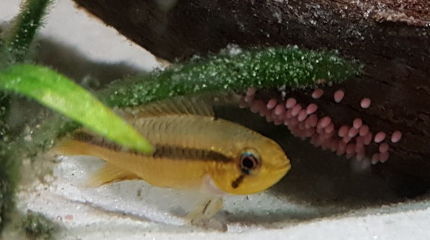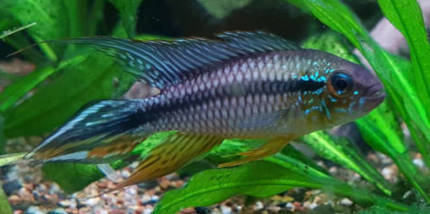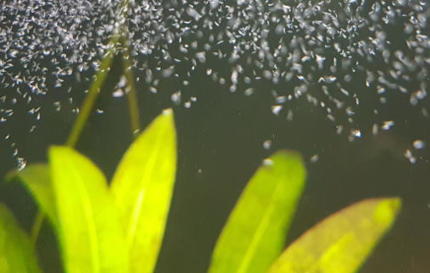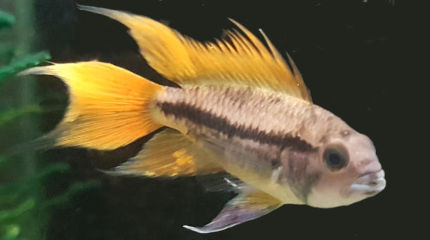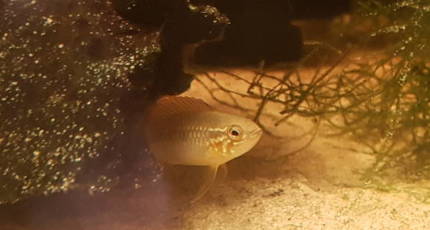Breeding Apistogramma Agassizii is quite achievable.
I have enjoyed breeding Apistogramma Agassizii and in this guide I share with you my method to successfully breed Apistogramma Agassizii.
Most of this information is also be applicable to breeding other Apistogramma species.
Finding A Breeding Pair
To start breeding Apistogramma Agassizii you will obviously need a Male and a Female who are sexually mature. Apistogramma are usually sexually mature by the time they are 6 months old.
To get your pair there are a few options, you can buy say 6 fish and then allow a pair to naturally pair off.
Once a dominant male and female pair off you can then move them to the breeding tank. You may find that once the first pair are removed from the initial group of 6 fish another male may take the role of dominant male and you may get another pair.
Alternatively you could buy a pair of Apistogramma directly from either your local fish shop or a breeder. In this case you will likely pay more for a pair.
Also note while the seller maybe able to provide a male and a female there is no guarantee that they will spawn and breed successfully.
A breeder might sell a pair which are a known to have successfully bread though they would again be more expensive and again there would be no guaranteed that they would breed in your tank.
Having said that, I have found that once you have a confirmed male and female and provide the right conditions and setup they will spawn and breed.
Apistogramma Agassizii Male vs Female
Males
Are usually larger and more colourful with more pronounced finnage. In the case of Apistogramma Agassizii elongated trailing dorsal fin and a delta tail. While Apistogramma Cockatoudies have extended rays at the beginning of their dorsal fin.
Females
Tend to be more plain grey to slightly yellow in colour often with a black lateral line. The yellow colour becomes more intense when they are preparing to breed.
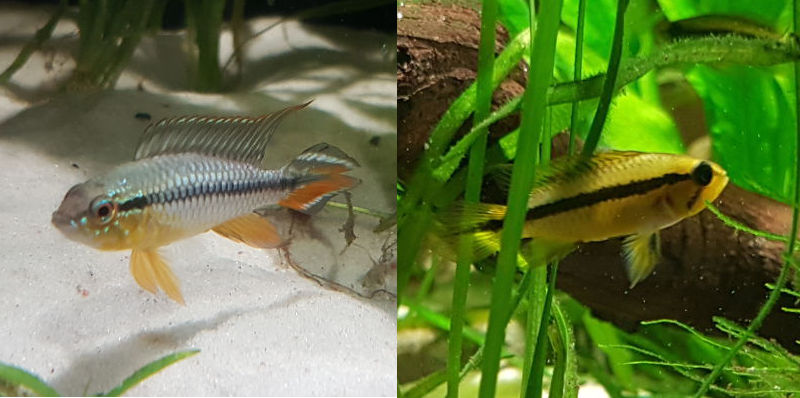
Apistogramma Breeding Tank Setup
I suggest a 20 gallon tank be used as the breeding tank.
While a smaller tank could be used a 20 gallon tank provides enough room should the pair start to get aggressive and need a hiding place or two. Also it allows some room for the fry before needing to move them to a separate grow out tank.
Apistogramma will lay their eggs in gaps between rocks, in a hole they have dug in sand next to a rock or in a cave. I have experienced all of these scenarios.
My preferred method is to use a ceramic cave. These caves should have a hole so that the female can fit inside it is optional if the male goes inside. If the male does not go inside the cave he can still fertilise the eggs by filling the cave with sperm.
In addition to the spawning cave I also include some driftwood covered in java moss in the tank. This serves 2 purposes, the drift wood provides a break in line of sight and some hiding places and secondly the moss can contain some micro organisms which can provide a source of food to young fry.
In addition to moss on drift wood I also often add some free floating moss this just provides another retreat for the fish if it is needed. The moss provides some cover for the Apistogrammas and can make then feel more secure.
For the breeding tank use a bare bottom without any substrate or planted plants. I find this is easier from a maintenance point of view especially as you want to maintain excellent water quality.
Bare bottom tanks make seeing and siphoning out any debris such as uneaten food a lot easier.
If you would like more plants you could add some in pots so they can easily be positioned or removed if needed.
I use either a Matten filter or sponge filter for the filtration. Both are air driven, easy to use, reliable and will not suck up fry. They also only provide minimal water flow which Apistogramma prefer.
The tank and filter should be cycled before introducing the breeding pair. Meaning that the filter should be established and that there is no ammonia or nitrites in the water and minimal nitrates.
Dither fish can also help the pair feel more safe and secure. I find the best dither fish for Apistogramma are ember tetras or dwarf pencilfish as they will not prey on the eggs or fry.
Lighting is not so critical, Apistogrammas like dimly lit partly shaded waters, ambient room light is sufficient for a breading tank though some small not to bright light can be useful and make observing the pair a little easier.
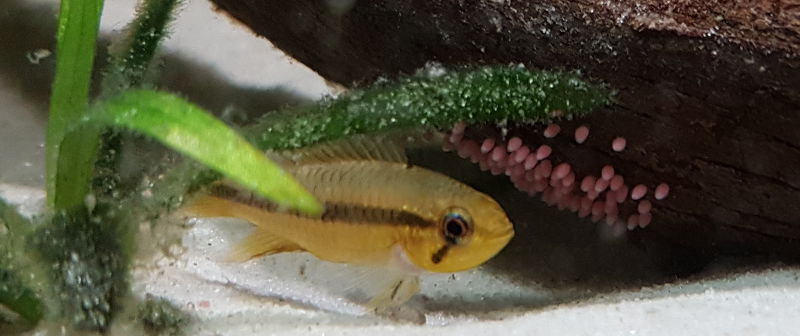
Water Chemistry
Apistogramma Agassizii originate from the Amazon Basin in South America where black water tributaries have soft and acidic water with PH in the order of 4 - 5.
Wild specimens are fussier and require a better match to natural conditions exhibited in their natural habitat. Whereas commercially bread specimens will be better adapted to more neutral water conditions.
For commercially raised specimens I have found that with a PH of around 6.8 and low hardness (GH = 6 & KH = 2) I can successfully breed Apistogramma Agassizii.
Meeting these water conditions can improve the chances of breeding however fluctuating water conditions can also be stressful. If your water source is not naturally slightly acidic and soft using additives like "PH down" may lead to fluctuating water conditions if not regularly monitored and maintained.
It might be better to acclimatise your fish to the water you have even if it is not ideal as opposed to having fluctuating water conditions.
Rain water or RO water can be used to reduce the water hardness if needed.
Conditioning Apistogramma For Breeding
The Apsitogramma pair should be conditioned for breeding, this means ensuring that they are both strong and healthy.
If they are a new purchases they should go through a quarantine period.
To get your Apsitogramma pair in good condition for breeding I recommend feeding live foods.
Brine Shrimp, mosquito lave and Blood worms, are good choices. I tend to mainly feed Brine shrimp.
If I don't have live brine shrimp ready to go frozen brine shrimp are a good alternative. High quality pallet or flake food can be used on alternate days.
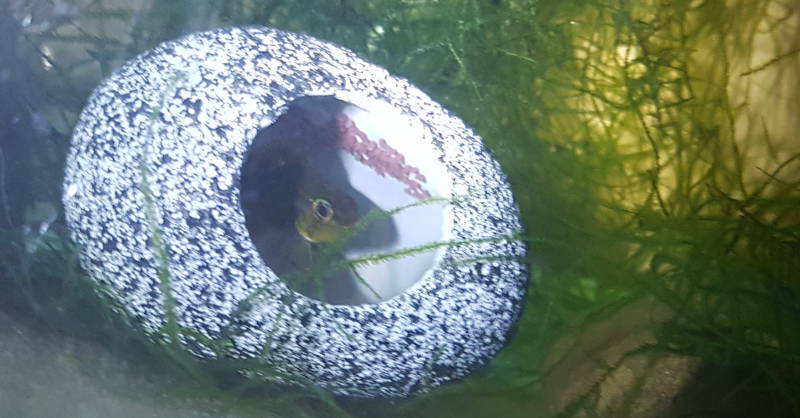
Apistogramma Breeding Behaviour
When ready to spawn the female will become a much brighter yellow she will sometimes show her belly to the male as a sign that she is ready to breed. She will then lure the male towards the breeding cave or spawning location.
Mating occurs with the female laying eggs on the wall of the cave followed by the male swimming over the eggs and fertilising them, this will continue until the female has laid all her eggs.
Depending where in the cave the eggs are laid you may not be able to see them but the eggs will be light pink in colour.
The female will look after the eggs and fan them so that water moves over them in order to reduce the likely hood of any fungus or bacteria growing on the eggs. The female might also move the eggs although if they have spawned in a breading cave this is rare.
At this stage the female will defend the cave and chase away other fish including the male. She may allow the male to pass by but will not let him get too close.
If they become overly aggressive to one another I suggest removing the male, this is more likely to occur in smaller tanks without any objects to block visual line of sight.
The eggs usually hatch within 2 or 3 days.
Note with new Apistogramma pairs it can take a few goes for them to be successful. On the first occasions they may eat the eggs if they get spooked or maybe the eggs do not get fertilised.
Be patient they will most likely soon spawn again and after a couple of attempts be successful.
Tips To Trigger Apistogramma Spawning
Feed live foods
I have found feeding plenty of live foods such as baby brine shrimp can help to trigger spawning. I believe this could be for 2 reasons, it ensures the parents are well fed and in good condition but it also shows the pair that there is plenty of food around for their young.
Water change to simulate wet season
A water change particularly when there is a storm in your area and a shift in barometric pressure is also reported to trigger spawning. The water change helps to simulate large rainfall or wet season.
Raising Apistogramma Fry
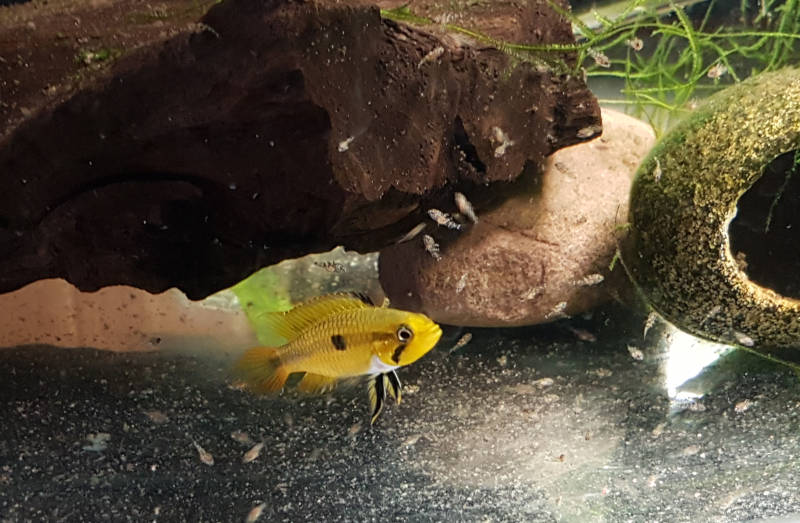
Once the fry are free swimming the female will lead them out of the cave.
Mum will keep a close eye on them and keep them in a close group if any stray she will try to round them up.
She will also lead the fry around the tank to areas of potential food such as areas with algae or microorganisms.
For the first couple of days when the fry are free swimming micro worms and infusoria are a good food option.
After 3 or 4 days you can try feeding live baby brine shrimp. At this stage its important to use live baby brine shrimp not frozen, the movement of the live food will help to attract the fry to it and you have much more success in feeding the fry.
For more information on feeding fry I recommend our Best foods for raising baby fish article.
At this stage also keep an eye on how the parents are behaving if there is any sign of aggression between the male and female I suggest removing the male.
Generally, the female will allow the male to watch from afar but this is not always the case particularly if the tank is on the smaller side without any objects to block visual line of sight.
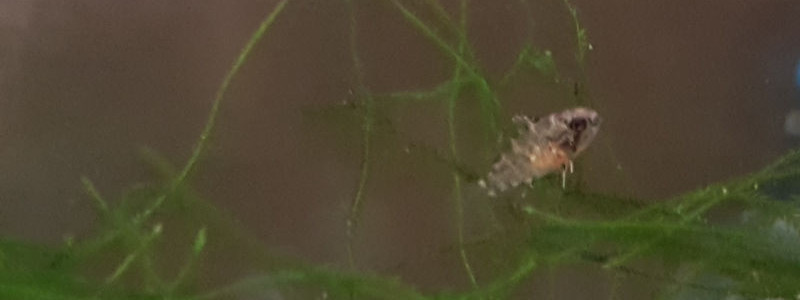
Conclusion
Breeding Apistogramma Agassizii or other speciec of Apostogramma can be a rewarding challenge. Breeding is not too difficult particularly with commercially bread specimens but may require some patience.
The tips in this guide should help you to succeed in spawning and raising your first batch of fry. Good Luck!
